|
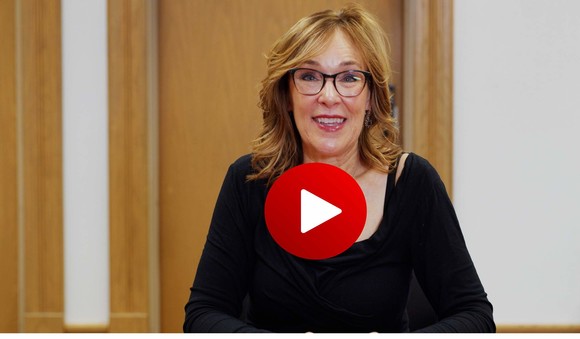 |

By: David G. Hornak, Ed.D., Executive Director of the National Association for Year-Round Education (NAYRE)
One of the few constants in education over the past 140 years has been the 180-day school calendar. Despite the learning gaps the long summer intermission creates, unfinished learning due to the pandemic, educator burnout, and the substitute shortage, educators across the nation continue to work diligently each year to make a difference. While not a new idea, due to the pandemic, school districts across the nation are taking a longer look at year-round education. The term year-round education is falling out of favor because students and staff do not attend school 300+ days each year, but rather school districts balance their allocated school days across the calendar year. A more accurate description is a balanced school calendar. Balanced calendar education has ties to the late 1800s and it provides more frequent access to the students which allows school districts to provide food, care, and educational materials more consistently than the traditional school calendar does with a long summer recess.
Continuous Education: A foundation of the balanced calendar is continuous access to food, instruction, care, and education resources, which research shows is especially important in preventing summer learning loss for students who may not have the benefits of travel, camps, and trips to the library. Educators are able to provide continuous access through what is known as intersessions —the days when students are on break. With the additional days, some students might actually go to school for more than 200 days each school year. Intersession provides real-time remediation and enrichment opportunities, which in the traditional model tend to occur during the summer.
Positive Outcomes: The balanced school calendar parents and guardians have shared that this alternative calendar is more aligned with current lifestyles and work schedules. In fact, budgeting for 12-13 weeks of childcare each summer can be a burden. The balanced calendar reduces the number of consecutive days off each summer in exchange for additional school breaks throughout the school year. Jennifer Robel, a balanced calendar parent, says, “Overall, parents continue to see tremendous academic and social growth in children who attend school on the balanced calendar. They see their children retaining what they have learned the previous school year. Students and educators remain revitalized and refreshed on this continuous instructional cycle.”
Final Thoughts: The traditional school calendar requires teachers to reteach between 20-40 school days each year. The amount of required time to reteach contributes to the learning gaps that educators are trying so hard to close. Collectively across the nation, school districts are spending 21 billion dollars remediating the learning gaps that the traditional calendar contributes to each year. By moving to the balanced school calendar, we may be able to repurpose the funds that are being devoted to closing learning gaps and earmark them instead for programs that focus on differentiating instruction or extending learning opportunities. Click here to download Dr. Hornak's featured article.
|
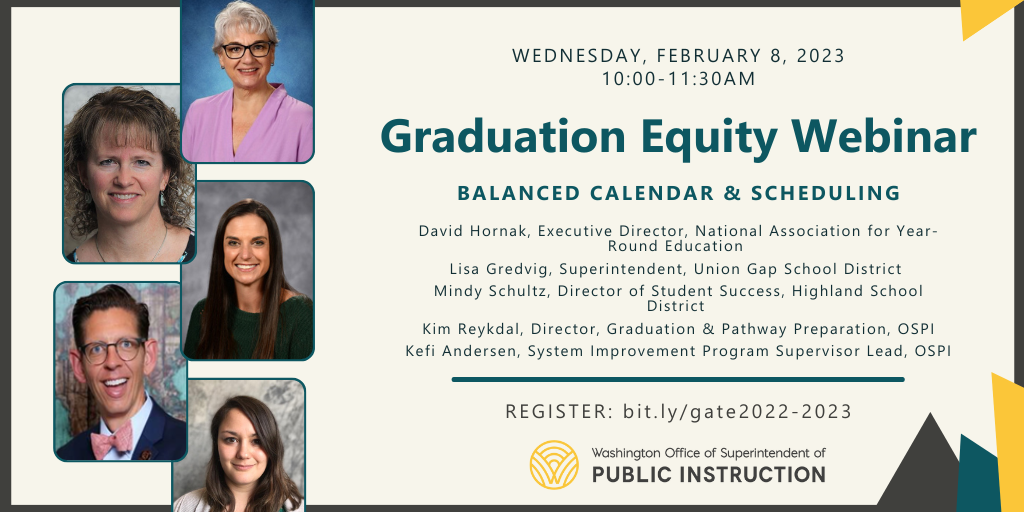
Leadership Team Activities Care Package
By: Jon Mishra, Assistant Superintendent, Elementary Early Learning & Federal Programs, OSPI
Do you want your team to take a deeper look at Balanced Calendar & Scheduling? We’ve crafted activities that take 15 minutes, 30 minutes, and 90 minutes for you! Take a look at toolkits, reflection questions, and more. Check out this month’s Care Package. Please feel free to also check out this month's P-3 School Improvement Monthly Bite!
Interconnectedness and Balance
By: Shandy Abrahamson, OSPI Office of Native Education CTE Tribal Engagement Specialist
Within Indigenous communities, a common practice of wellness is recognizing the importance of balance. As taught by my elders, balance is the interconnectedness of your mental, spiritual, physical, and social spaces within who you are. The key word in this definition is “interconnectedness” and without this, balance cannot exist. It is believed that when we are not in balance, we experience mental and emotional stress that can manifest into physical sickness and/or other personal ailments. Interconnectedness can include the importance of food, sleep/rest, boundaries, community, introspection, relationships, and movement.
We understand and know that strong organizational skills, study skills, time/energy management, project management and other related skills can produce the outcomes identified by yourself or the systems in which you are involved in. Yet, how are these skills developed so we as individuals can practice them efficiently? One contribution is through identifying your personal priorities and confidently setting healthy boundaries. I must admit, I have been in the process of learning and practicing setting healthy boundaries with others and this is not a small task. Identifying your personal priorities and setting healthy boundaries is a practice that focuses on the process over the outcome. Continue reading...
|
|
 |
|
|
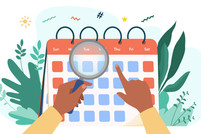
In Washington state, a traditional school year lasts 180 days. Students have a few short breaks along the way and a long break in the summer. Many students experience a loss of learning and continuity during the extended break. Students who have consistent access to enriching activities throughout the year are more successful in school (Pedersen, 2016). How can we increase access to these enriching activities for more students?
One potential solution is a “balanced calendar.”
What is balanced calendar?
Instead of concentrating 180 school days into nine months, a balanced calendar spreads them throughout the year. Schools may use the breaks to host “intersessions,” where they can provide additional learning experiences if needed.
Does it work?
Schools that follow a balanced calendar tend to have higher achievement scores (Pedersen, 2016). A traditional summer break lasts 10 to 12 weeks, compared to 5 to 7 weeks in a balanced calendar. Shorter breaks mean more consistent student-teacher partnerships and less learning disruption. Students need less review time at the beginning of the new school year so there is an embedded opportunity for expansion of curriculum and learning experiences.
Does it mean more school?
Balanced calendars usually keep the same number of school days as traditional calendars, but they add flexibility. With input and feedback from families, education leaders decide what is best for their local community. Teachers who work in a balanced calendar have reported that it is easier to plan instruction in shorter chunks between breaks rather than for a full semester (Pedersen, 2016). In addition, ending the first semester, trimester, or second quarter before winter break creates more energy and readiness for students and teachers when they return (Hasser & Nasser, 2005).
|
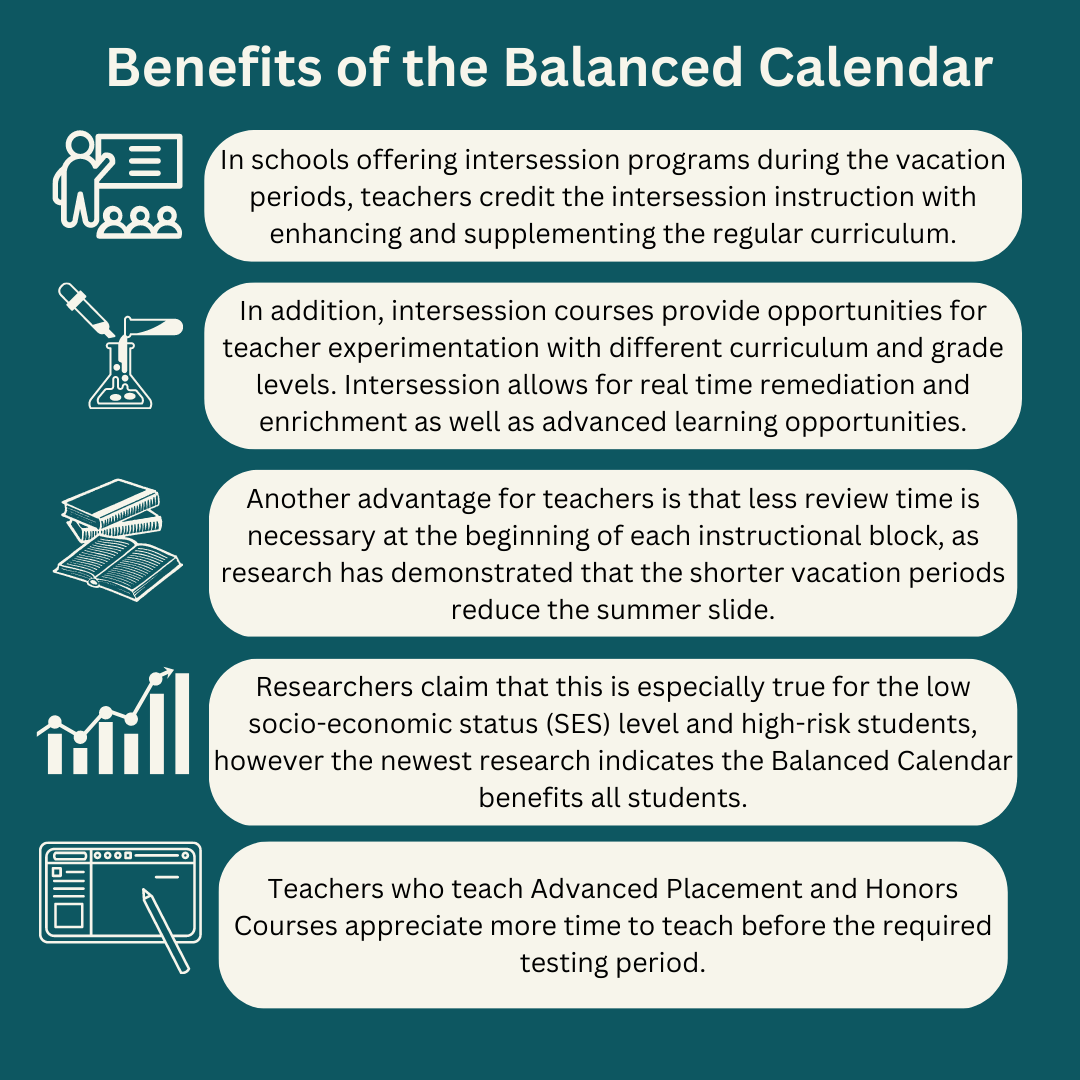
|
|
A Building Bridges Story: Antonio Inspires
Building Bridges grants have made it possible for 32 community-based organizations across Washington state to partner with schools in promoting school attendance and engaging youth in their education.
This project helped fund Priceless Inspiration's work with youth and is led by Antonio McLemore. In this video Antonio shares his inspiration for helping students reengage in school and see their potential to be successful. For more information about Antonio and his work, visit Antonio's website here.
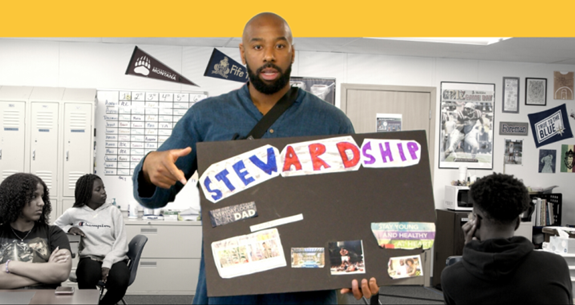
A Reengagement Story: Elida's Story
Of the 6% of students that disengaged from school between March 1, 2020 and the end of the 2020-21 school year, 48% returned to public education. Many school districts are leveraging state and federal emergency relief funds to provide targeted outreach to those students, as well as supports to help them reengage in school. Check out Elida's story here. This work is part of OSPI’s ESSER Attendance & Reengagement Project.
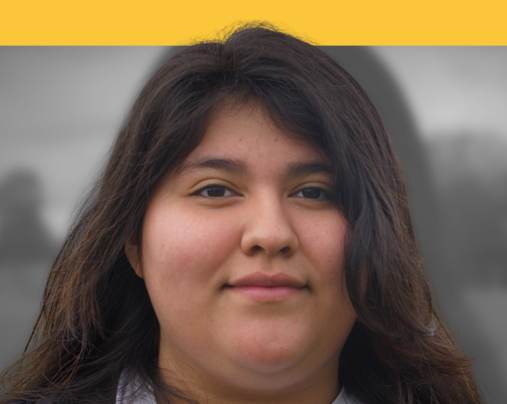 |

February: Black History Month
National Black History Month serves as both a celebration and a powerful reminder that Black history is American history, Black culture is American culture, and Black stories are essential to the ongoing story of America — our faults, our struggles, our progress, and our aspirations. It is essential that we take time to celebrate the immeasurable contributions of Black people, honor the legacies and achievements of generations past, reckon with centuries of injustice, and confront those injustices that still fester today. Find out how culturally responsive and diverse is your classroom library here.
|
February 14th: Valentine's Day
Valentine's day is a time to celebrate love and friendship. This day can be used to shed light on cultural stories and personal connections. Holidays such as Valentine’s Day can be a great opportunity for students to bring their cultural experiences into the classroom. Learn more about celebrating an inclusive Valentine's Day here.
|
|
 |
 |
|
February 20th: President's Day
Washington’s Birthday is a U.S. federal holiday celebrated on the third Monday of February in honor of George Washington, the first president of the United States. Increasingly, the holiday has become an occasion to celebrate the birthdays of both President George Washington and President Abraham Lincoln.
|
|
ALL STUDENTS PREPARED FOR POST-SECONDARY PATHWAYS, CAREERS, AND CIVIC ENGAGEMENT.
Led by State Superintendent Chris Reykdal, OSPI oversees K-12 public education in Washington state. Our mission is to provide funding, resources, tools, data and technical assistance that enable educators to ensure students succeed in our public schools, are prepared to access post-secondary training and education, and are equipped to thrive in their careers and lives.
|
|
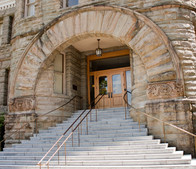 |
|
|
|
|
|